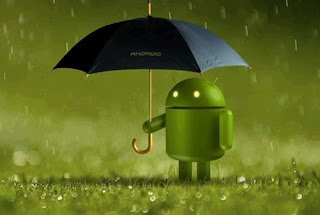Introduction:
It’s very interesting to a talk about web service, here I will
explain to connect simple type dot net web service using android application.
By using a web service we can easily get the desired data by sending request.
Before I start the topic we discuss, what are the files
needed to start to access the web service.
Steps to follow:
1.
Make sure you have added the Ksopa2 jar file on
your directory, if you need help to add the file refer the below link, download
and follow the steps to add ksoap2 jar file.
http://www.dotnetcode.in/2012/06/adding-ksoap2-jar-file-or-using-soap.html
http://www.dotnetcode.in/2012/06/adding-ksoap2-jar-file-or-using-soap.html
2.
Add the below code on androidManifest.xml file, below
code permit the application to connect on intenet. Add the code outside the
application tag in androidManifest.xml file
<uses-permission
android:name="android.permission.INTERNET"/>
|
In a dotnet web service we must know about these things i.e.
1. Methods name-Here I call the methods name as MobileLogin
2. Namespace-Here I call namespace name as http://mobileapp.com
4. Passing parameter name-here I used usrname and password
So you before workout your project collect all the details
about web service.
Use the below code
import org.ksoap2.SoapEnvelope;
import org.ksoap2.serialization.SoapObject;
import
org.ksoap2.serialization.SoapSerializationEnvelope;
import org.ksoap2.transport.HttpTransportSE;
import android.app.Activity;
import android.os.Bundle;
public class webActivity extends Activity {
/**
Called when the activity is first created. */
HttpTransportSE
androidHttpTransport;
String
NAMESPACE = "http://mobileapp.com";
String
METHOD_NAME = "MobileLogin";
String
SOAP_ACTION = "http://mobileapp.com/MobileLogin";
String
URL = "http://132.121.21.77:8080/MobileService.asmx?";
@Override
public
void onCreate(Bundle savedInstanceState) {
super.onCreate(savedInstanceState);
setContentView(R.layout.main);
SoapObject
request = new SoapObject(NAMESPACE, METHOD_NAME);
SoapSerializationEnvelope
envelope = new SoapSerializationEnvelope(
SoapEnvelope.VER11);
request.addProperty("usrname ", "xxxxx@gmail.com");
request.addProperty("password ", "abcdefg");
//**********www.dotnetcode.in*********************
envelope.setOutputSoapObject(request);
envelope.implicitTypes
= true;
envelope.dotNet
= true;
int
Timeout1 = 20000;
androidHttpTransport
= new HttpTransportSE(URL, Timeout1);
androidHttpTransport.debug
= true;
try
{
androidHttpTransport.call(SOAP_ACTION,
envelope);
Object
response = envelope.getResponse();
String
rslt;
//Finally
you get the result from web service
rslt=response.toString();
}
catch (Exception e) {
//**********www.dotnetcode.in*********************
//
TODO: handle exception
}
}
}
|
That’s it above code works perfectly …Incase if you need the
source code put your commnets with your email id…I will forward the source
code.
Happy coding…keep reading






